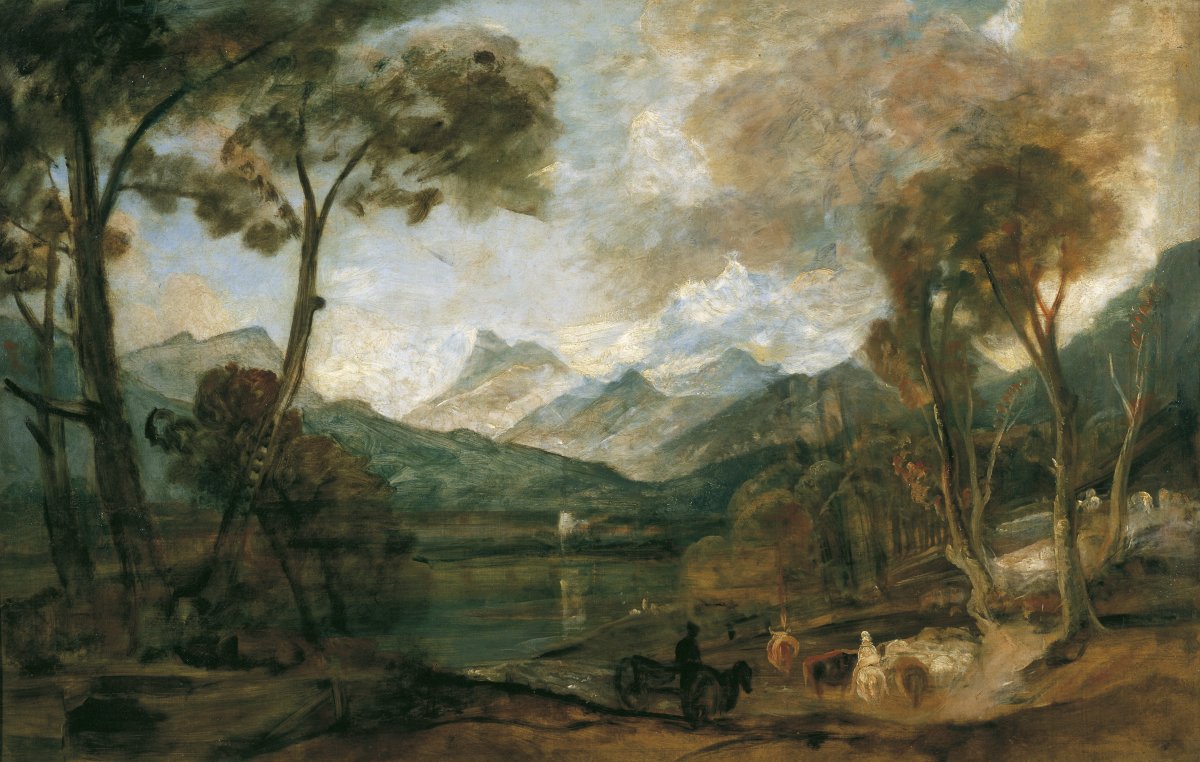View near Keswick, Cumberland

-
About the work
- Location
-
Country: Finland
City: Helsinki
Place: British Embassy
This oil painting of a lake with mountains beyond has been painted with fluid, swift brushstrokes, reminiscent of the artist’s work in watercolour. Areas of the paint are transparent, giving the work a ghostly feel. In the foreground, a figure on a horse-drawn cart is silhouetted against the reddish brown earth. A watercolour by de Wint of a similar view titled 'Near Keswick' is in the collection of the Walker Art Gallery, in Liverpool.
Although Peter de Wint was predominately a watercolour artist, after his death several examples of his oil paintings were found in the loft of his house in Gower Street, London. These were sold after his death in 1849 and raised over £2,364 for his widow.
-
About the artist
Peter de Wint was born in Hanley, Staffordshire, the son of a Dutch physician. In 1802, he moved to London and was apprenticed to John Raphael Smith. In 1806, he negotiated an early release from his apprenticeship and, in the following year, exhibited three landscapes at the Royal Academy. Two years later he entered the Royal Academy schools. He was elected a member of the Society of Painters in Watercolour in 1811 and would exhibit over 400 paintings at their premises. In 1810 de Wint married Harriet Hilton, sister of the painter William Hilton, and all three lived together in Soho until 1827, when the de Wints moved to Bloomsbury. De Wint made extensive annual tours of the UK throughout his career. He died from severe bronchitis in 1849.
-
Explore
- Places
- England, Lake District, Cumbria, Derwentwater
- Subjects
- horseback, cart, topography, landscape C19th, genre, tree, cow, horse, lake, mountain
- Materials & Techniques
- canvas, oil, oil painting
-
Details
- Artist
-
Peter de Wint (1784 - 1849)
- Title
- View near Keswick, Cumberland
- Date
- Medium
- Oil on canvas
- Dimensions
- height: 67.00 cm, width: 102.60 cm
- Acquisition
- Purchased from Agnew's, June 1975
- Provenance
- [Possibly fourth day of artist’s studio sale, Christie’s, London, 27 May 1850 (Lot 384), as ‘Near Keswick, Cumberland’, for £4.10.0; from which sale purchased by ‘Walkins’;] with Palser & Co. in c.1850; with Agnew’s Gallery, London, in 1919; collection of Sir Stephen Courtauld; with Agnew's Gallery, London in 1975; from whom purchased by the Department of the Environment in June 1975
- GAC number
- 11966